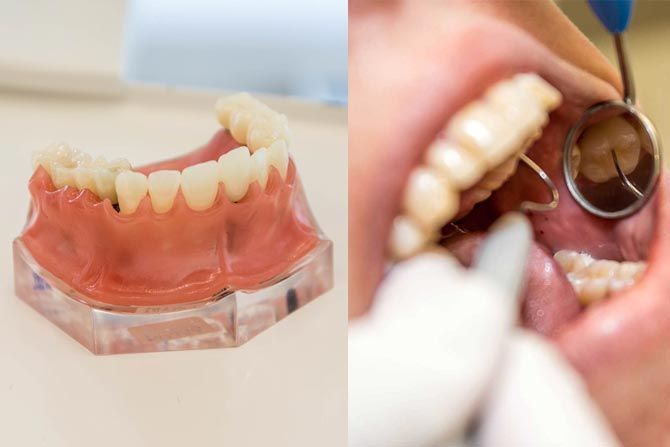Dental Implants
Dental implants - live as usual with permanent teeth
At Lentini dental, you will encounter a high level of competence and extensive experience when it comes to dental implants. All our clinics offer treatment with dental implants with experienced therapists.

What is a dental implant?
Dental implants have therefore become an increasingly common alternative for those who want to replace their lost teeth. The great advantages of dental implants are that, unlike, for example, removable dentures or bridges, they are attached to the jawbone. it will be easier to chew and you will not have to worry about them coming loose. Another great advantage of dental implants compared to so-called bridges is that the dental implants do not require you to grind and drill in healthy nearby teeth.
How is the treatment done?
Step 1: Examination and individual assessment
The first step is for your dentist to perform a thorough examination and an individual assessment with, among other things, X-rays to determine if it is appropriate to have dental implants in your mouth. It is important to have a strong and healthy jawbone. Some diseases and medications can also mean that the risk of complications increases and that dental implants may therefore be unsuitable. In children, you need to wait with implants until the jawbone has grown completely to avoid complications. Then your dentist goes through the treatment with you and describes the different steps in the treatment.
Step 2: Attachment of implants
The second step is to attach the implant itself to the jawbone which will act as an artificial root for your new tooth. This is done through a small surgical procedure where the implant is attached to the jawbone. How many implants are attached depends on how many teeth are to be replaced, but with a completely toothless upper jaw, for example, you may need as many as six implants to give a stable result. The titanium that the implant screws are made of has been shown to work well with the body's tissues and has a unique ability to grow together with the jawbone. The operation is performed under anesthesia and therefore does not hurt during the procedure itself, even if you may experience tenderness and some pain for some time afterward.
Step 3: Healing
After the procedure, the implants are then allowed to grow together with the jawbone and the tissue. This process takes different lengths of time depending on the placement of the implants, but often it takes a few months up to six months. During this time, removable dentures are usually provided to fill the voids.
Step 4: Fix your new teeth
Then you can then attach the new teeth that are usually made of ceramic. If you are going to replace a single tooth, the new tooth (crown) is attached to the implant. If you need to replace several teeth in a row, you will instead make a bridge between the implants.
After you get your new teeth, you will be called for regular check-ups to check that the implants are in good condition and that no complications occur. It is also very important to take care of the hygiene around the implant just as carefully as a real tooth. Your dentist or dental hygienist will also help you with tips and advice on how to clean the implants in the best way. Keep in mind that smoking involves an increased risk of problems with your implants and refraining from smoking is important to guarantee a good result.